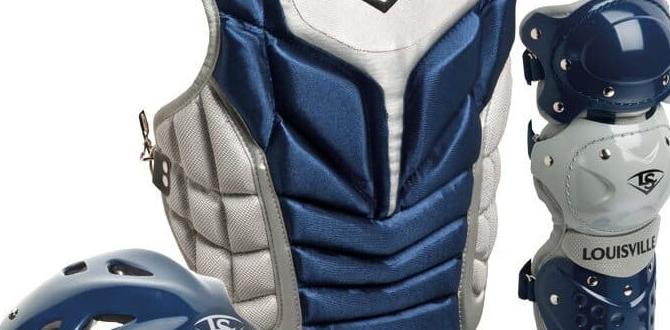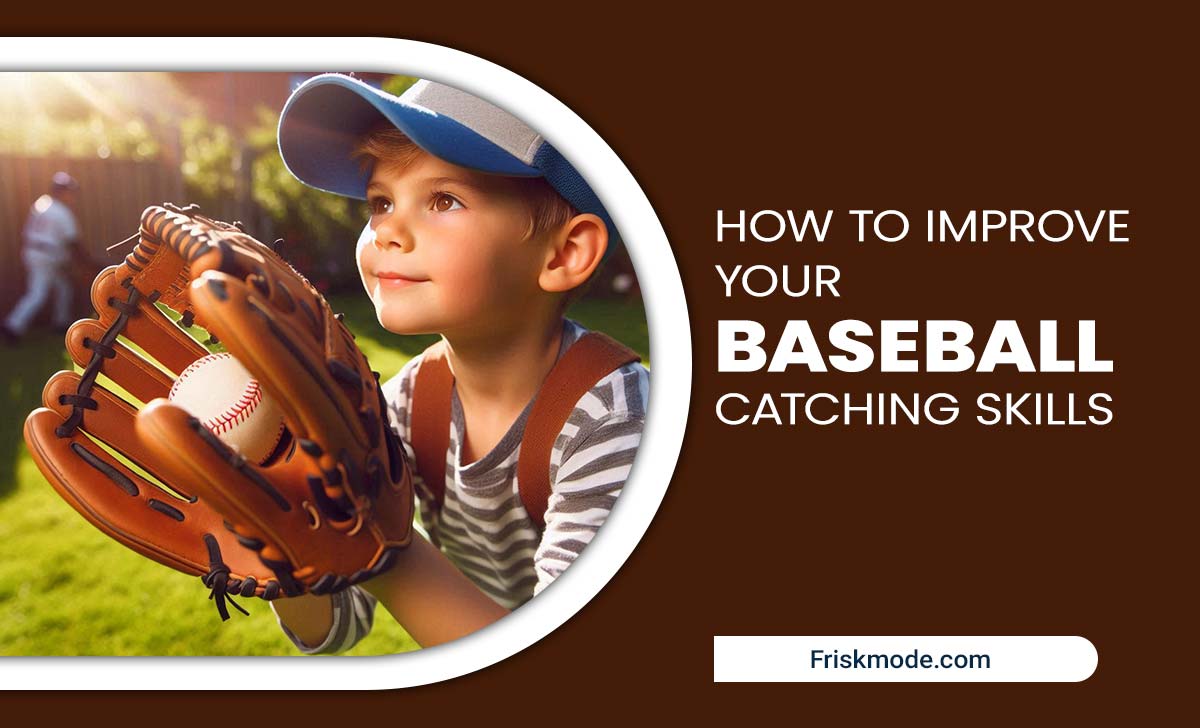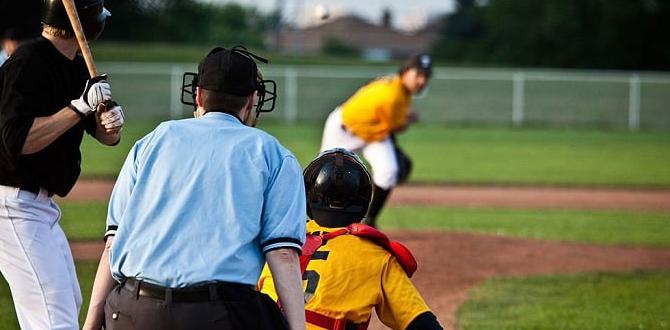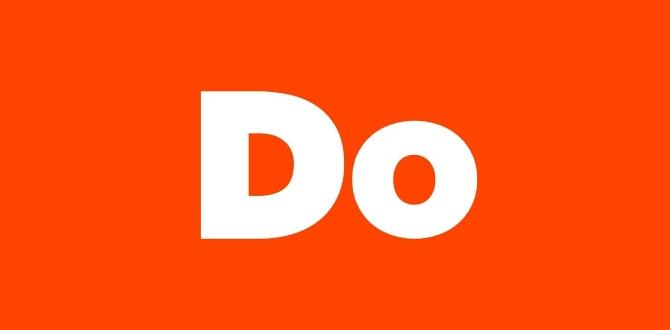Catchers helmets for women provide crucial head and face protection, ensuring safety and confidence behind the plate. Choosing the right one means focusing on fit, features, and materials designed for female anatomy, allowing players to focus on the game, not fear.
Step up to the plate with confidence! As a catcher, you’re the engine of the defense, calling the shots and digging every pitch. But let’s be honest, it’s been a tough game finding gear that truly fits and protects like it should. For too long, equipment, especially catcher’s helmets, has been designed with a one-size-fits-all approach. This leaves many female players struggling with ill-fitting gear that compromises both comfort and safety. You deserve equipment that’s built with you in mind. We’re going to break down exactly what makes a catcher’s helmet essential for women, what to look for, and how to find your perfect fit. Get ready to feel more secure and play your best!
Why Catchers Helmets Are Non-Negotiable for Women
Behind home plate, you’re in the hot seat. You see every pitch, field every foul tip, and block every wild one. This position carries a lot of risk, and your head and face are incredibly vulnerable. A catcher’s helmet isn’t just an accessory; it’s your primary line of defense against serious injury. Think about it: foul tips can whack you in the face, errant pitches can hit your head, and collisions at home plate are always a possibility. Without proper protection, these everyday occurrences on the diamond can lead to concussions, dental injuries, and facial fractures. For women, this protection needs to be tailored. Generic designs might not account for differences in head shape or facial structure, potentially leading to gaps in protection or discomfort that distracts from your game.
The Unique Needs of Female Athletes
It’s no secret that bodies aren’t all built the same, and female physiology has specific considerations when it comes to athletic gear. While the core function of a catcher’s helmet is universal – protection – the way it achieves that may need refinement for female players. Factors like head circumference distribution, jawline, and even how hair is worn can influence helmet fit and effectiveness. Manufacturers are increasingly recognizing this, creating designs that offer a more secure and comfortable fit specifically for women. This isn’t about making things “easier,” it’s about ensuring that every player, regardless of gender, has access to safety equipment that performs optimally.
Understanding the Risks Without Proper Gear
Let’s talk straight: playing catcher without a helmet is like driving a car without a seatbelt. The risks are substantial and can have long-lasting consequences. Here’s a breakdown of what you’re up against:
- Concussions: A direct hit to the head from a pitched ball, foul tip, or player collision can cause a concussion. Symptoms can range from headaches and dizziness to more severe cognitive issues.
- Facial Fractures: The bones in your face – nose, cheekbones, jaw – are all at risk from high-speed impacts.
- Dental Injuries: A foul tip or unexpected impact can lead to chipped, broken, or even lost teeth. The cost and pain associated with this are significant.
- Eye Injuries: While less common with helmets, a severe impact near the eye socket can cause vision problems.
- Neck Strain: An ill-fitting or overly heavy helmet can also contribute to neck strain over time.
Investing in a well-designed catcher’s helmet is an investment in your health, your longevity in the sport, and your peace of mind. It allows you to focus on making plays, not worrying about getting hurt.
Key Features to Look For in a Women’s Catcher’s Helmet
When you’re out on the field, your helmet is your shield. But not all shields are created equal. For women, finding the right catcher’s helmet means looking beyond just the brand name and considering specific features that enhance protection and comfort. Let’s dive into what really matters:
Fit and Sizing: The Foundation of Protection
This is, hands down, the most critical factor. A helmet that doesn’t fit properly won’t protect you effectively. What does “good fit” mean for a catcher’s helmet?
- Snug but Comfortable: It should feel secure on your head without squeezing uncomfortably. You shouldn’t be able to easily wobble it side-to-side or front-to-back when properly fastened.
- No Gaps in Coverage: The helmet should cover the forehead, temples, and back of the head adequately. Make sure the jaw guard (if attached) aligns well with your chin and jawline.
- Adjustability: Look for helmets with adjustable harness systems, often using a dial or straps. This allows you to fine-tune the fit for maximum security and comfort. Many women’s specific helmets offer a ponytail port, which is a thoughtful addition for managing hair without compromising fit.
- Chin Strap: A well-designed, comfortable chin strap is essential to keep the helmet in place during aggressive movements or impacts.
Tip: When trying on helmets, wear your hair as you would for a game. This will give you a true sense of how it fits with your hairstyle.
Protection Standards and Materials
Safety standards are in place for a reason. Helmets are designed to absorb and dissipate impact energy. Understanding these standards and materials can help you make an informed choice.
- ASTM Certification: Always look for a helmet that meets or exceeds the ASTM standards for safety. The American Society for Testing and Materials (ASTM) sets the benchmarks for protective equipment. For catcher’s helmets, specifically look for standards like ASTM F953, which pertains to catcher’s masks. While this primarily addresses the mask aspect, the helmet shell and padding adhere to broader safety principles.
- Shell Material: Most modern catcher’s helmets use a high-impact ABS (Acrylonitrile Butadiene Styrene) plastic or polycarbonate for the outer shell. These materials are strong, durable, and can withstand significant force.
- Padding: The interior padding is crucial for absorbing shock. Look for dense, comfortable foam that provides a good cushion. Moisture-wicking liners are a bonus, helping to keep you cool and dry. Some helmets feature specialized impact-absorbing foam technologies to further enhance protection.
Ventilation: Staying Cool Under Pressure
Being a catcher is a physically demanding job. You’re squatting, moving, and exerting a lot of energy, often in warm weather. Good ventilation in your helmet is key to staying comfortable and focused. Helmets with multiple ventilation ports allow air to flow through, helping to dissipate heat and sweat. This can prevent overheating and make long games or practices much more bearable.
Visibility and Field of Vision
While the primary function is protection, your helmet shouldn’t hinder your ability to see the game. The cage (if it’s a helmet with an integrated cage, or the mask itself if separate) should offer a clear, unobstructed view of the pitcher, the field, and runners. Some designs might offer a wider field of vision than others. Pay attention to how well you can see your surroundings when trying on different models.
Weight and Balance
A helmet that’s too heavy can lead to fatigue and neck strain. Conversely, a helmet that’s poorly balanced might feel like it’s pulling in one direction. Modern helmets are designed to be as lightweight as possible without compromising on protection. The balance should feel natural on your head, allowing for quick movements and transitions.
Types of Catchers Helmets for Women
The world of catcher’s gear has evolved, and there are now several options available, catering to different preferences and levels of play. Understanding these types will help you narrow down your search.
1. Traditional Catcher’s Helmets (with Separate Mask)
This is the classic setup. You have a helmet that covers the head, and a separate wire or cage-style mask that attaches to it, protecting the face. This setup often allows for excellent ventilation and a very wide field of vision.
- Pros: Excellent ventilation, often lightweight, very wide field of vision, customizable mask options.
- Cons: Can sometimes feel like two separate pieces that might shift slightly, requires separate purchase of mask and helmet (though often sold as a set).
2. Hockey-Style Helmets (with Integrated Cage)
Inspired by hockey gear, these catcher’s helmets have a hard outer shell with a built-in cage or mask. They offer robust protection and a streamlined look.
- Pros: All-in-one protection, very secure fit, usually offers excellent impact absorption for the face.
- Cons: Ventilation can sometimes be less than traditional setups, field of vision might be slightly more obstructed by the cage structure, can be heavier.
3. Catcher’s Masks
While not a full helmet, it’s important to mention the cage itself. Some players prefer to use a separate mask with a batting helmet or even a specialized skull cap for added protection where the helmet might not cover. However, for the full protection needed behind the plate, a dedicated catcher’s helmet is recommended.
4. Youth vs. Adult Sizing
This is a crucial distinction. Youth helmets are designed for smaller heads and may have different adjustment ranges. Adult helmets are built for larger head sizes and offer more robust protection features suitable for older, stronger players. Always ensure you are looking at the correct size category for the player.
Top Features and Technologies in Modern Women’s Catchers Helmets
Manufacturers are constantly innovating to enhance safety and comfort. Here are some of the advanced features you might find in newer women’s catcher’s helmets:
Moisture-Wicking and Antimicrobial Liners
Sweat is a catcher’s constant companion. Modern helmets often feature inner linings made with materials that pull moisture away from the skin, keeping you drier. Antimicrobial treatments help prevent odor-causing bacteria from growing, keeping your helmet fresher for longer.
Repositionable Jaw Guards
Some helmets offer adjustable or removable jaw guards. This allows players to customize the fit around their chin and jaw, ensuring better comfort and protection as well as accommodating different hairstyles, including ponytails.
Reinforced Cage Designs
For hockey-style helmets, the steel or composite cages are engineered for maximum strength and impact resistance. Designs often focus on thinner bars to improve visibility without compromising structural integrity. Some elite masks even use lighter yet stronger materials like titanium or advanced composites.
Enhanced Padding Systems
Beyond basic foam, some helmets incorporate dual-density padding or specialized “impact absorption” technologies. This means softer padding for comfort and harder, more resilient foam in critical impact zones to better dissipate force.
Lightweight yet Durable Shells
Advances in plastic and composite materials allow manufacturers to create shells that are incredibly strong but also surprisingly light. This reduces fatigue and makes the helmet more comfortable to wear for extended periods.
Comparing Popular Women’s Catcher’s Helmet Models
While specific models can change year to year, here’s a general comparison of features you might find across leading brands. This is a guide to help you understand what to look for, not an exhaustive list of every helmet on the market. It’s always best to check the latest reviews and manufacturer specifications before purchasing.
| Feature | Brand A (e.g., Rawlings) | Brand B (e.g., Easton) | Brand C (e.g., Wilson) | Brand D (e.g., All-Star) |
|---|---|---|---|---|
| Style | Hockey-Style with Integrated Cage | Traditional Helmet + Mask System | Hockey-Style with Integrated Cage | Traditional Helmet + Mask System |
| Padding | EPS Impact Absorption Liner, PU Comfort Padding | Comfort Padding, Moisture-Wicking Liner | ABS Shell, Dual-Density Foam | EPS Liner, Soft Stretch Fit Liner |
| Adjustability | Rear Adjustment Dial, Chin Strap | Adjustable Harness, Chin Strap | Rear Adjustment Dial, Secure Chin Strap | Voilá! Adjustment System, Chin Strap |
| Ventilation | Strategic Vent Ports | Numerous Vent Holes | Multi-Channel Ventilation | Large Vent Openings |
| Cage Material | Powder Coated Steel Bars | Powder Coated Steel Bars | Reinforced Steel Cage | Powder Coated Steel or Composite |
| Weight | Medium-Heavy | Light-Medium | Medium | Light-Medium |
| Special Features | Reinforced Toe Protection (for cage), Ponytail Slot | Lightweight Mask, Wide Field of View | Extended Jaw Protection, Removable Jaw Guard | Anatomical Fit, Breathable Liner |
This table provides a snapshot. When you’re shopping, look for specific model names and read detailed specifications. For example, a specific model might offer advanced technology like:
- Schutt Sports AiR Maxx Pro Catchers Helmet: Often lauded for its ventilation and patented ventilation system designed to keep players cool.
- Under Armour Pro Catcher’s Helmet: Known for its impact absorption technologies and comfortable, secure fit.
Remember to check sizing charts carefully. For example, the USA Baseball emphasizes that all equipment, including catcher’s gear, must meet specific safety standards relevant to the age and level of play.
How to Properly Fit and Adjust Your Catcher’s Helmet
Getting the fit right can make all the difference. Here’s a step-by-step guide to ensure your catcher’s helmet is secure, comfortable, and ready to protect you:
1. Measure Your Head
Before you even look at a helmet, grab a flexible tape measure. Wrap it around your head about an inch above your eyebrows and ears, going around the widest part of your head. This circumference measurement is your starting point for finding the right helmet size. Manufacturers will typically provide a sizing chart based on these measurements.
2. Try It On
When you get the helmet, put it on. Don’t just slip it on; make sure the harness system is loosened beforehand. Guide it onto your head, and then begin to tighten the adjustment system.
3. Engage the Adjustment System
Most modern helmets have a dial or straps at the back. Tighten this until the helmet feels snug but not painfully tight. It should grip your head firmly but comfortably.
4. Check for Gaps and Stability
- Chin Tuck: Nod your head forward as if you were tucking your chin to your chest. The helmet should stay in place and not slide down significantly over your eyes.
- Side-to-Side Shake: Gently shake your head from side to side. The helmet should move with your head; it shouldn’t have excessive independent movement.
- Front-to-Back Rock: Try to rock the helmet forward and backward with your hands. There should be minimal movement.
- Facial Coverage: Ensure the cage or mask aligns properly with your face. There should be no large gaps around your forehead, temples, or jaw. The chin guard should sit comfortably and securely under your chin.
5. Adjust the Chin Strap
The chin strap is the last layer of security. It should be snug enough to keep the helmet from tilting awkwardly, but not so tight that it’s uncomfortable or restricts breathing. You should be able to fit one or two fingers comfortably between the strap and your chin.
6. Consider Your Hair
If you have long hair, try on the helmet with your hair tied back in a ponytail or bun, just as you would wear it during a game. Some helmets have a dedicated ponytail port, which can be a game-changer for fit and comfort.
7. Wear It for a Bit
If possible, wear the helmet for 5-10 minutes. Little pressure points might become more noticeable over time. Make any necessary micro-adjustments with the dial or straps.
When to Replace Your Helmet
Helmets are designed for a single, severe impact. If your helmet has been involved in a significant collision or shows any signs of damage (cracks, deep dents, flattened padding), it’s time for a replacement, even if it still looks okay. Over time, padding can also compress, reducing its effectiveness. Generally, consider replacing your helmet every 3-5 years, or sooner if it’s been compromised.
FAQ: Your Questions About Women’s Catcher’s Helmets Answered
Got questions? We’ve got answers! Here are some common queries about catcher’s helmets




